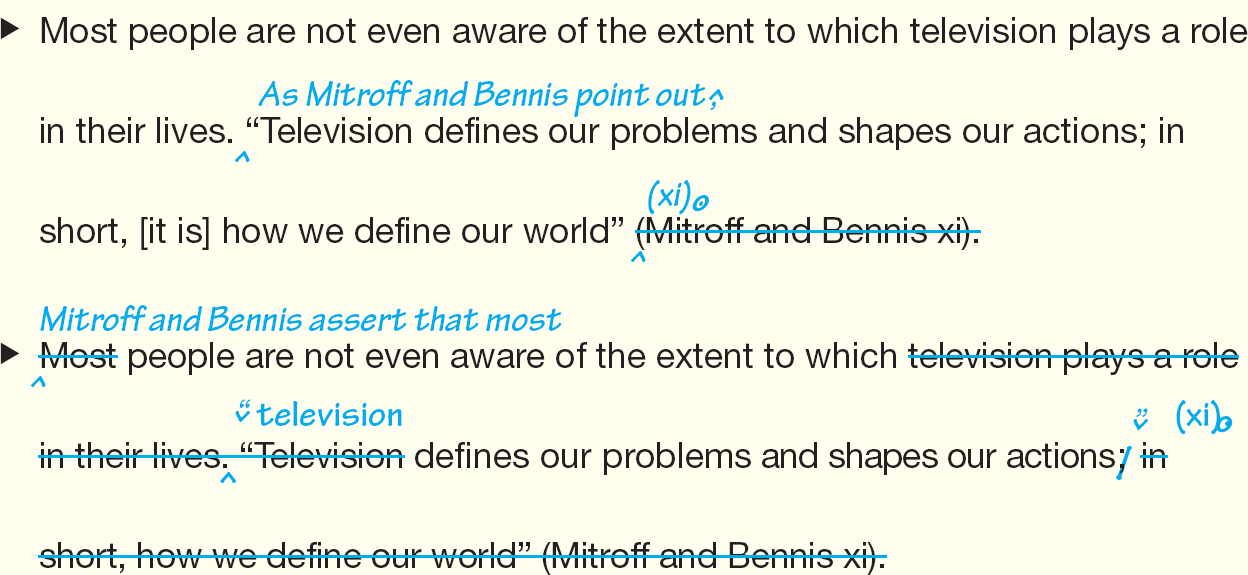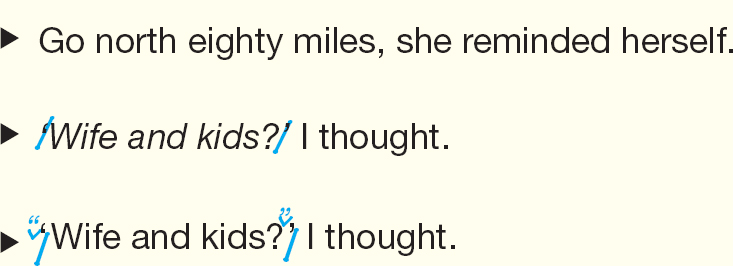E6 Integrated Quotations, Questions, and Thoughts
When you use sources or write dialogue, merge your quotations, questions, and thoughts smoothly into your text so that the reader can tell who is speaking, thinking, or providing information.

Use introductory phrases to link ideas and provide necessary background and context. Refer to the source or the speaker in the sentence. (See also P6.)
E6-
Writers often introduce quotations by mentioning the name of the person being quoted. Although says and states are acceptable, consider using more precise verbs and phrases that establish logical connections and provide variety. Examples include agrees, asserts, charges, claims, confirms, discusses, emphasizes, and suggests.
![]()
Readers expect quotations and text to fit gracefully so that the writer’s ideas and the material from supporting sources are both distinct and coherent. (See also E2-d.)
Cite a source smoothly, guiding readers from text to quotation.
For more on integrating source information in an academic essay, see Chapter 23; for more on citing and documenting sources, see Chapters 24 (MLA) and 25 (APA).
Identifying the author of your source in the main part of your sentence often supplies the context and transition a reader needs.

Carefully select the text that introduces or integrates the quotation, as well as the exact words you are quoting.

E6-
Enclose a direct quotation in quotation marks, identifying the speaker and using his or her exact words. Do not use quotation marks for an indirect quotation or a question that you address to the reader.

Begin a new paragraph to show each change of speaker.

E6-
If you supply the exact words that you or someone else thinks, follow the guidelines for direct quotations. Quotation marks (or sometimes italics, for emphasis) are optional, but be consistent throughout an essay.
